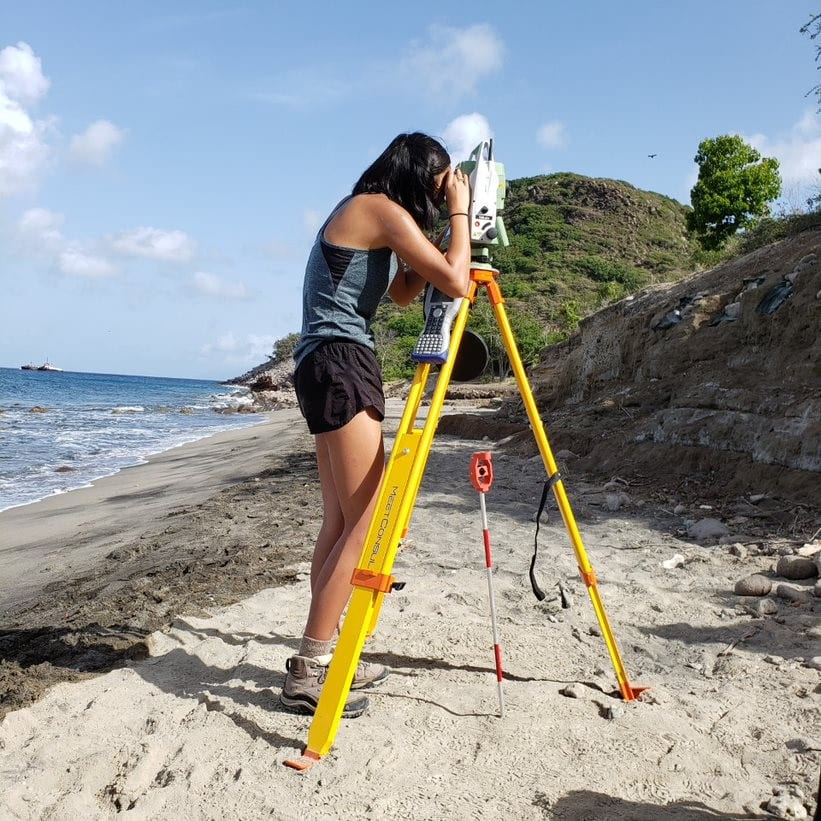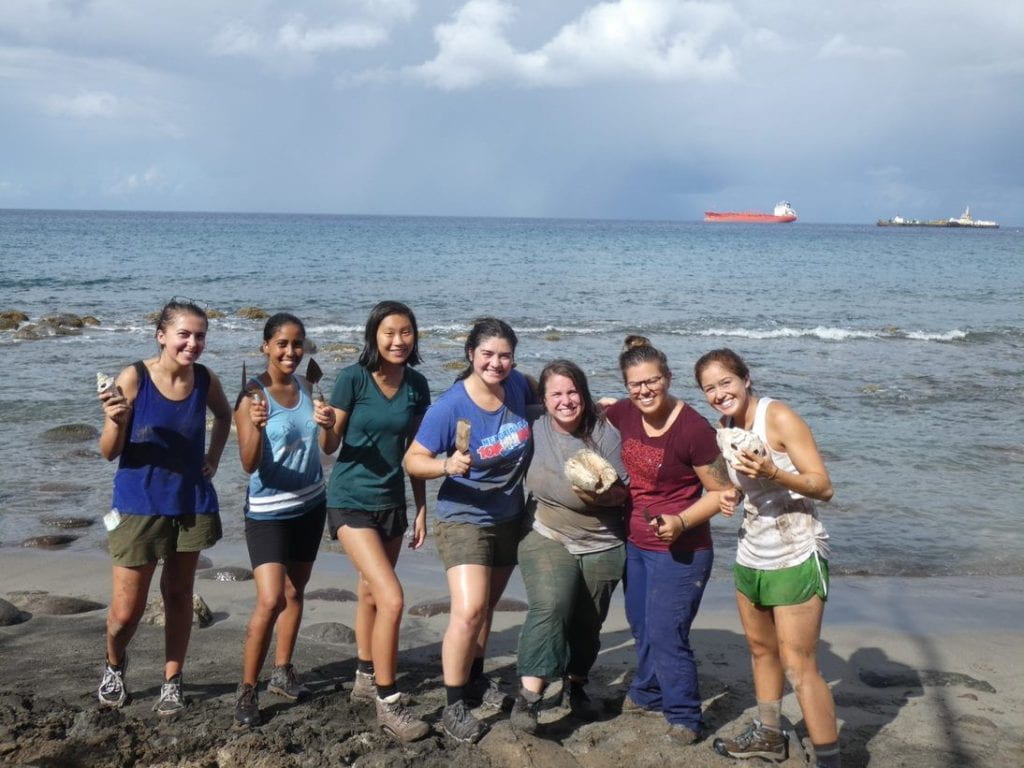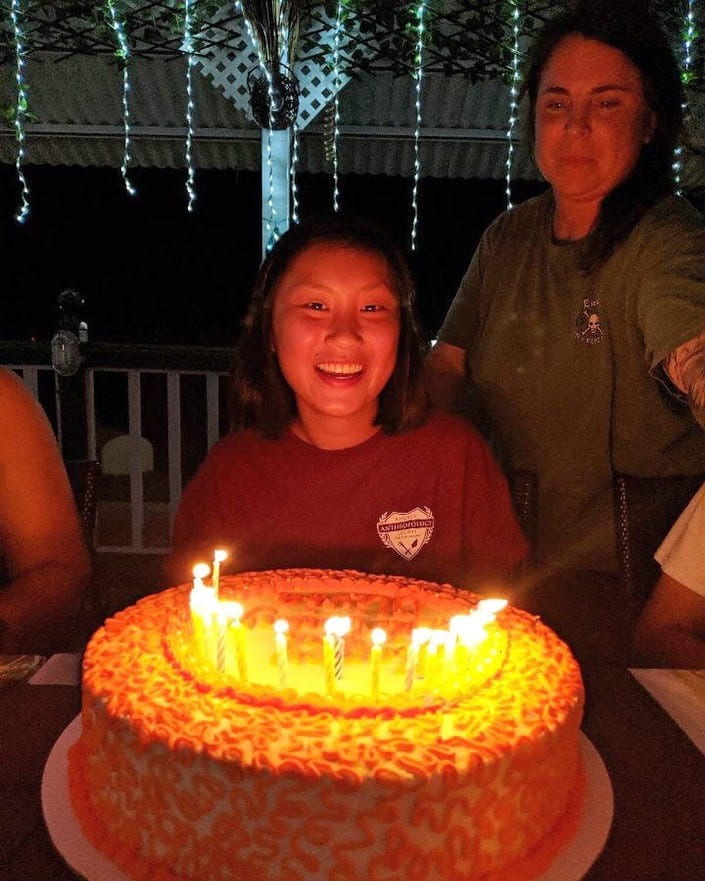Three Planes to Paradise: The Story of My First Field Experience
by Olivia Green
A year and a half ago, having not taken a single college class, I would have never guessed I would be a National Science Foundation researcher studying what I’ve long hoped of understanding. In becoming a member of this team, I would find myself in a Caribbean paradise, excavating human remains, and taking a time machine back to a point in history rich with drama and discovery. Additionally, I’ve learned invaluable skills in the field, the rigors of a research project, and most importantly met incredible peers and professors who undoubtedly will become lifelong connections.
Having no field experience prior to this trip, this study introduced me to the sweaty, exhausting, and yet rewarding world of forensic archeology. As a member of the forensic archaeology team, I helped excavate an 18th century cemetery used by enslaved Africans. Because our work helps tell the story of a marginalized population and preserve their history, I was proud to be a part of this team.
After a couple days of scraping away erosion fill, it was exciting seeing the slightest change in soil color indicating burial fill. As the days progressed, that excitement grew as the burial fill turned lighter and lighter into the flaky white of coffin lid. Then brushing little by little, there it was: the head of a humerus. Layer after layer my excitement grew as more and more bone was exposed and surprisingly very well preserved. This find followed our first week at the sugar works site where our entire team excavated artifacts from around the world.
From the sugar works to the cemetery, I learned a wealth of information in the field including:
- how to hold a trowel correctly and excavate properly.
- the art of walking in straight lines through GPR and gradiometer work.
- operating a total station.
- processing collected materials at SECAR (St. Eustatius Center for Archeological Research).
- the global history of Statia who’s remnants were left for us to discover.
It was an incredible experience fueled by the Statian sun and my thirst to learn (and for water).
The last few days were spent collecting skeletal data before we left, yet it was here where I was most excited. In the humid living room of SECAR, we cleaned and processed our materials that we had recovered from the beach a few days earlier. With guidance from our mentors, I really felt my project start to come together, and the progress excited me.
Time out of the field was filled with trips to the beach and exploring the island. Happy hour and karaoke were the staples of Friday nights, and the local bakery next to CNSI (the Caribbean Netherlands Science Institute) where we were staying became my morning stop before a long day’s work. Our snorkeling trip after an underwater archaeology presentation was a highlight of our out-of-field activities. Nights together became a great time to get to know each other, while the openness of our professors and teaching assistants made it easy to learn about them and their careers. I was especially touched by the impromptu birthday celebration, which made it easier to be so far away from home.
Our return to Texas State initiated the second part of the project: research. To begin, we cataloged our artifacts shipped from Statia, and I can now proudly tell you the difference between whiteware and tin-glazed ceramics. Once completed, I dived into my research to piece together my project comparing the skeletal pathology of the slaves from the Godet cemetery on Statia with the skeletal pathology of the Newton Plantation Cemetery in Barbados and the New York African Burial Ground. The research process has shown me the difficulties and rewards of producing an original work of research. From the proposal phase, to analyzing data, and compiling everything for a poster, I refined my work ethic and have a stronger identity as a researcher.
Unlike many of my peers, I came into this project not knowing what route of higher education I was going to pursue whether that be graduate school or medical school. I’m wrapping up this project with an even harder decision to make. The pull of archaeology and academia is challenging my long-held idea of life as a public servant through the combination of law enforcement and medicine. I realize my uncertainty is okay and whatever direction I go, both sides, archaeology and medicine, will follow. My experience on Statia will be one I will never forget and one that will shape my future as an undergraduate student and beyond.



